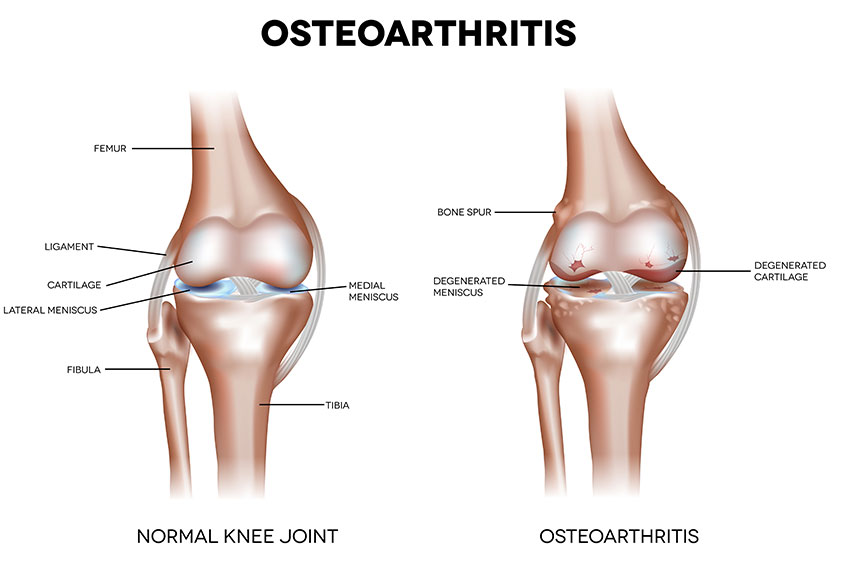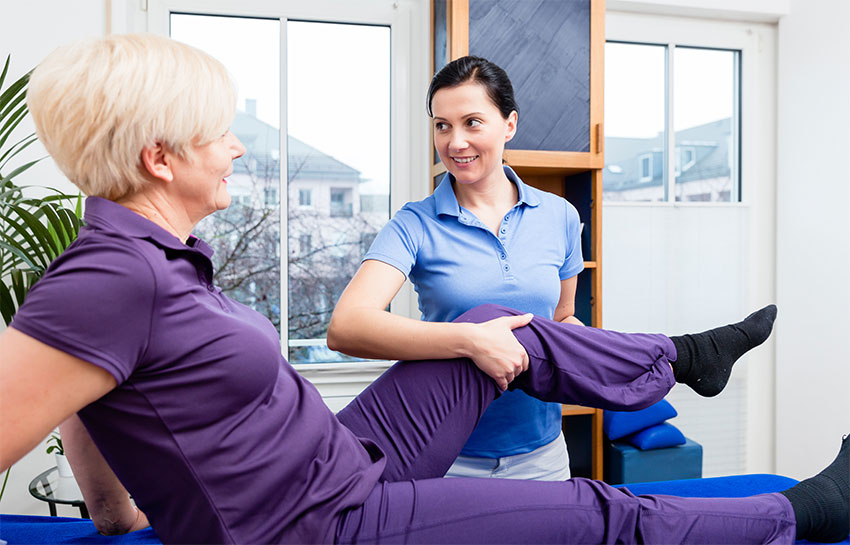Six Drug-Free Osteoarthritis Treatments
Osteoarthritis (OA) is the most common degenerative joint disease, affecting more than a quarter of the adult population in the United States. OA is a chronic, progressive condition that tends to worsen slowly, but can result in significant pain and disability; it is also associated with a substantial economic and societal burden.

While there is no cure currently available, there are a variety of therapies available to help manage OA symptoms, relieving pain and improving your quality of life.
Let’s discuss each of these osteoarthritis management strategies in a little bit of detail so you have a better understanding of how each component can fit into a comprehensive management strategy for your OA symptoms.
1. Physical Activity
While you may be tempted to rest when your joints are sore, studies have shown that low-impact activity can actually help to manage symptoms of OA.
There are three components to an effective exercise program for individuals suffering with OA.
- Cardiovascular (aerobic) exercise – aims to increase your heart rate and includes activities such as walking, swimming, biking, etc. Aerobic exercise helps to improve your stamina and energy levels, and also helps you maintain a healthy weight.
- Stretching exercises – help to maintain, and even improve joint range of motion, which helps to relieve joint stiffness and pain.
- Strengthening exercises – having strong muscles around joints affected by OA can help decrease the stress on these joints and minimize pain.
Prior to starting an exercise program, you should consult with your doctor or physical therapist to determine the best types of activities for your specific symptoms. Remember to start, and progress physical activity slowly to allow your body time to adapt to the new demands that you’re placing on it. Also, pick activities that you enjoy and consider exercising with a friend – this will help you to develop a healthy habit and stick to your exercise program.
2. Weight Management
If you suffer with OA, maintaining a healthy weight is essential for reducing pain and minimizing further joint damage. Being overweight places excess stress on the weight-bearing joints of your body; especially the back, knees, hips, and feet. In an effort to lose weight you should consume a healthy, balanced diet consisting of lean meats and an abundance of fresh fruits and vegetables. In addition, you should participate in regular physical activity including aerobic exercise, stretching, and strengthening exercises. If the thought of changing your diet scares you, consider consulting with a nutritionist or dietitian to determine a suitable diet plan for your lifestyle.
3. Physical and/or Occupational Therapy.

Physical and occupational therapists can help to not only improve range of motion and strength, but also help to minimize pain associated with osteoarthritis. Physical therapists can provide manual therapy and prescribe specific stretching and strengthening exercises to improve joint mobility and muscle strength. Occupational therapists can educate you on ways to perform everyday activities without placing added stress on the joints of your body.
Your physical therapist and/or occupational therapist may also recommend various mobility aids, such as canes, walkers, and orthotics to improve your mobility, as well as handy assistive devices such as long handled shoehorns, that make everyday tasks more manageable.
Pain Management Strategies for Osteoarthritis
Often physical therapists will utilize various modalities in addition to manual and exercises therapy to decrease inflammation, minimize pain, and improve function, including (but not limited to):
- Heat packs – Applying moist heat to the affected area in 20-minute intervals helps to soothe stiff muscles and improve blood flow.
- Over-the-counter topical analgesics – Applying topical agents, such as pain-relieving creams and gels, to the affected area can help to provide temporary relief of OA symptoms.
- H-Wave – This innovative technology provides many benefits that can help to improve joint range of motion and functionality. The high frequency setting on the H-Wave can reduce or eliminate nerve pain, therefore breaking the chronic pain cycle. The low frequency setting increases blood circulation which helps to provide nourishment to the area and removes waste through increased lymphatic drainage. By bringing nourishment in and flushing waste out, the H-Wave can help improve the environment around injured or painful and sore areas of the body.
5. Complementary and Alternative Medicine (CAM) Therapies
There are also numerous additional alternative therapies that individuals with OA can use to help manage symptoms including massage therapy, chiropractic care, acupuncture, and nutritional supplements (like chondroitin and glucosamine), among others.
6. Surgical Options for Osteoarthritis
When conservative measures fail to control OA symptoms, there are surgical options that may be recommended including:
- Bone realignment – If OA damages one side of your knee more than the other, an osteotomy may be recommended, which involves adding or removing a wedge of bone to shift your body weight away from the damaged side of your knee.
- Joint Replacement – If OA has severely damaged your joint, a joint replacement may be recommended, whereby the damaged joint surface is removed and replaced by plastic and/or metal components.
While there is currently no cure for osteoarthritis, there are a variety of therapies available to help manage osteoarthritis symptoms and improve your quality of life. It usually takes a little trial and error to find an effective management strategy to manage OA symptoms, and often treatment entails a combination of therapies; however, in some treatment-resistant cases, surgery is necessary to improve symptoms.
You may also like:
Is There A Better Predictor for Knee Osteoarthritis?
The Biochemistry of Pain – What’s Going On Beneath the Surface?
Conventional and Not-So-Conventional Facet Joint Pain Management